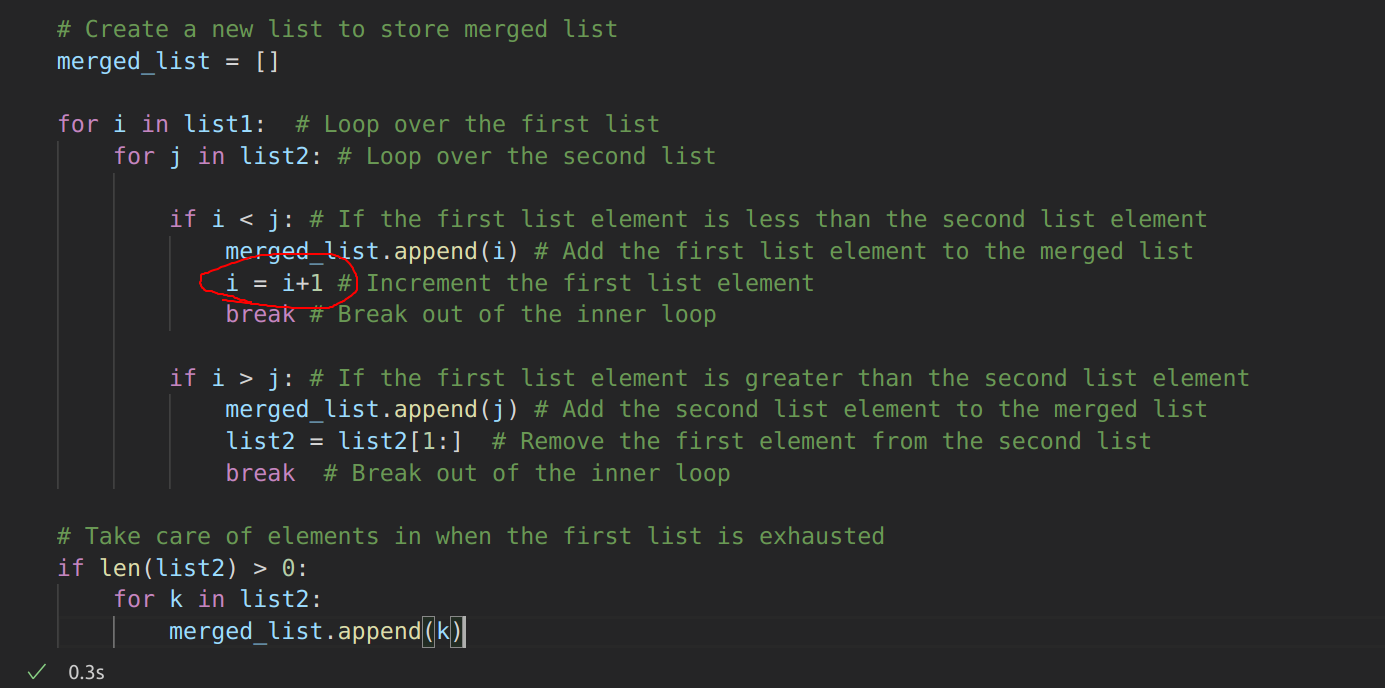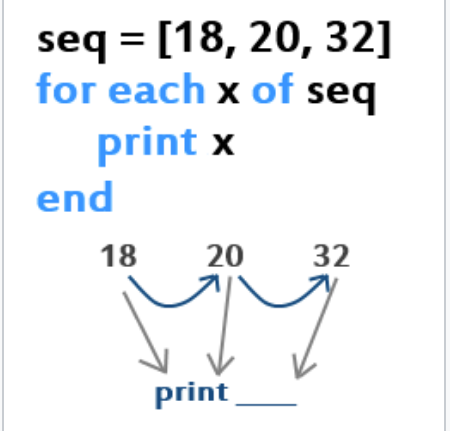Challenge 02 - Merge Sorted Lists
I can clearly remember that day. In in an interview, I was asked to open an IDE and merge two sorted lists. I could not do it in the stipulated time. As you might have guessed, I din’t hear back from the interviewer. I am glad to pick it up and now resolve it.
Objective - Given two sorted lists, merge it into a single sorted list \
Inputs
list1 = [4, 5, 6]
list2 = [-2, -1, 0, 7]
output
[-2, -1, 0, 4, 5, 6, 7]
It took me some time to think of the approach and testing the logic. After some trail and error, I came up with the following code.
# Create a new list to store merged list
merged_list = []
for i in list1: # Loop over the first list
for j in list2: # Loop over the second list
if i < j: # If the first list element is less than the second list element
merged_list.append(i) # Add the first list element to the merged list
i = i+1 # Increment the number for the outer loop
break # Break out of the inner loop
if i > j: # If the first list element is greater than the second list element
merged_list.append(j) # Add the second list element to the merged list
list2 = list2[1:] # Remove the first element from the second list
break # Break out of the inner loop
# Take care of elements in when the first list is exhausted
if len(list2) > 0:
for k in list2:
merged_list.append(k)
This was not giving the expected answer
For the inputs
list1 = [1,3,5,7]
list2 = [2,4,6,8]
The above code was returning the output
[1, 2, 4, 6, 8]
Can you guess why is this happening?
It is because of the highlighted code.

The increment for the outer loop was not working. After some googling, I understood that the behaviour of the for loop in python is not like the for loop in C for(i=0;i<n;i++). Python for loop behaves like a ‘foreach’ loop in java.
This image from wikipedia should help understand what is a foreach loop.

Then I switched from the for loop to the while loop. Here is my updated code which gave the expected result
merged_list = []
i = 0
while (i < len(list1)):
for j in list2:
if list1[i] < j:
merged_list.append(list1[i])
i = i+1
break
if list1[i] > j:
merged_list.append(j)
list2 = list2[1:]
break
if len(list2) > 0:
for k in list2:
merged_list.append(k)
For the inputs
list1 = [1,3,5,7]
list2 = [2,4,6,8]
The output is
[1, 2, 3, 4, 5, 6, 7, 8]
This is no where near ideal.
Scope for improvement
- Traverse the shorter list instead of fixing the list which needs to be traversed - Optimize the time.
- Instead of creating a new list, make changes to the existing list itself - Optimize space usage (I saw some elegant solutions online using this method)
This challenge certainly costed me an interview. I am confident that I will do better atleast if the same question is asked again. I hope that I will do better on other questions as well by completing the goal which I set for this year. I will be back with a new challenge soon.